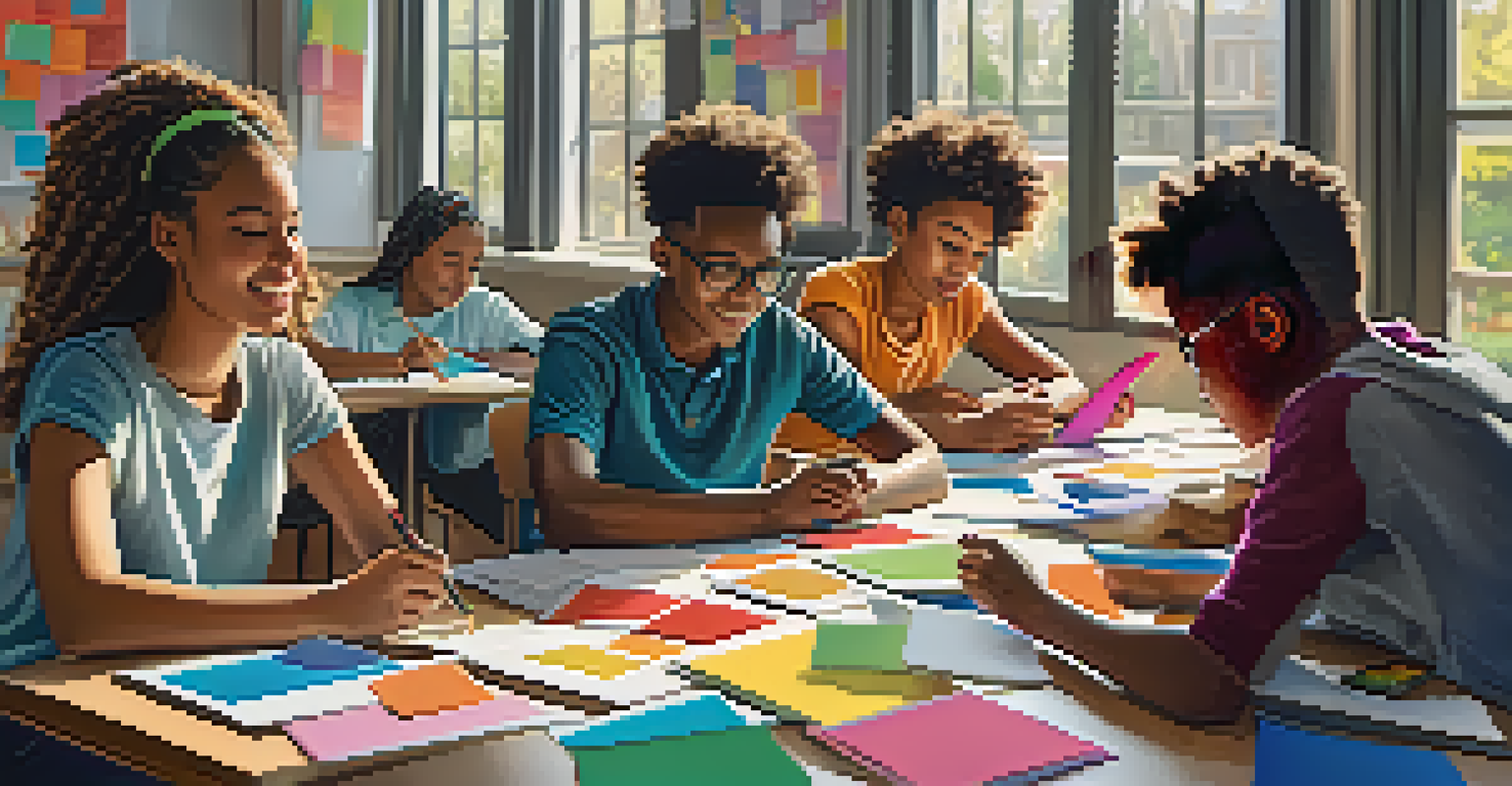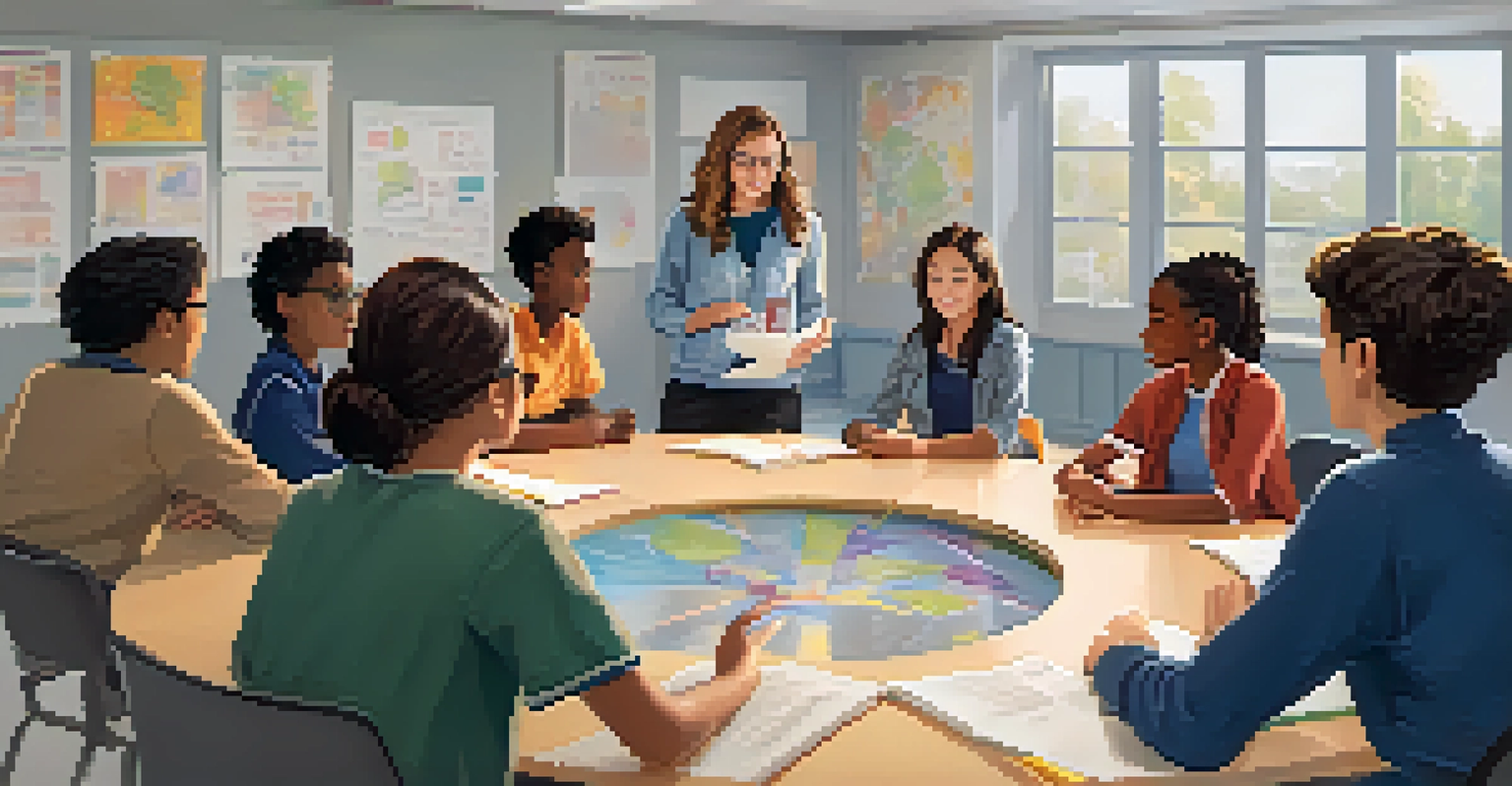Building a Collaborative Classroom for Personalized Learning

Understanding Collaborative Classrooms and Personalized Learning
At its core, a collaborative classroom emphasizes teamwork and communication among students. This approach allows learners to engage with one another, sharing ideas and perspectives that enrich the educational experience. Personalized learning, on the other hand, tailors education to meet individual students' needs, interests, and strengths, making learning more relevant and effective.
Alone we can do so little; together we can do so much.
The intersection of these two concepts creates a dynamic environment where students feel valued and understood. Imagine a classroom where each student not only learns at their own pace but also supports their peers, fostering a strong sense of community. This blend of collaboration and personalization promotes deeper understanding and retention of knowledge.
Creating a collaborative classroom for personalized learning is not a one-size-fits-all solution. It requires thoughtful planning and a commitment to cultivating relationships among students, teachers, and the curriculum. By embracing this approach, educators can create a nurturing space that empowers every learner to thrive.
Setting Up the Physical Space for Collaboration
The layout of a classroom can significantly influence how students interact with one another. Flexible seating arrangements, such as clusters of desks or comfortable seating areas, enable students to collaborate easily. Imagine a space where a circle of bean bags invites discussion, while movable desks foster group work, making the classroom feel more inviting and less restrictive.

In addition to seating, consider incorporating technology that supports collaboration, such as interactive whiteboards or tablets. These tools can enhance group projects, allowing students to share their ideas visually and instantly. When the physical space encourages interaction, students are more likely to engage with their peers and participate actively.
Collaboration Enhances Learning
A collaborative classroom fosters teamwork and communication, enriching the educational experience and promoting deeper understanding.
Lastly, don’t underestimate the power of creating areas dedicated to different types of collaboration. For instance, have a quiet corner for brainstorming and a more open space for group discussions. By providing varied environments, you cater to different learning styles, ensuring every student finds their niche.
Developing a Culture of Trust and Respect
A successful collaborative classroom hinges on trust and respect among students. When learners feel safe to express their thoughts and take risks, they are more likely to engage in meaningful discussions. Establishing ground rules around respect and active listening can create a positive atmosphere where every voice matters.
The whole is greater than the sum of its parts.
Building this culture takes time and intentionality. Start by encouraging students to share their backgrounds and experiences, fostering empathy and understanding. Activities that promote teamwork and conflict resolution can further solidify these essential values, allowing students to navigate challenges together.
Remember, the teacher plays a crucial role as a facilitator in this environment. By modeling respectful behavior and demonstrating how to handle disagreements constructively, educators set the tone for the classroom. This foundation of trust and respect can lead to deeper connections and an enhanced learning experience.
Incorporating Student Choice in Learning Activities
One of the hallmarks of personalized learning is giving students choices in their educational journey. When students have a say in what and how they learn, they are more motivated and invested in their education. Think of it like a buffet where students can select the dishes that appeal to them, rather than being served a fixed menu.
Incorporating choice can be as simple as allowing students to select projects that align with their interests or offering different formats for assignments, such as presentations, videos, or written reports. This not only caters to diverse learning styles but also encourages creativity and critical thinking. When students feel empowered, they become active participants in their learning.
Flexible Spaces Boost Engagement
The physical layout of a classroom, including flexible seating and dedicated collaboration areas, significantly influences student interaction and participation.
Moreover, involving students in setting their learning goals fosters accountability. By encouraging them to reflect on their progress and adjust their paths, you create a sense of ownership over their education. This collaboration between student and teacher can lead to significant academic and personal growth.
Utilizing Collaborative Learning Strategies
Collaborative learning strategies are essential for fostering teamwork and enhancing understanding. Approaches like think-pair-share or jigsaw activities encourage students to work together, share ideas, and learn from one another. Picture students discussing a concept with a partner before presenting their insights to the class, deepening their comprehension through dialogue.
These strategies not only enhance academic achievement but also develop crucial life skills such as communication and problem-solving. When students collaborate, they learn to navigate different viewpoints, negotiate solutions, and build consensus. This process mirrors real-world scenarios, preparing them for future challenges.
To maximize the effectiveness of these strategies, it's vital to provide clear expectations and guidance. Establishing roles within group work can help students understand their responsibilities, ensuring everyone has a stake in the outcome. This level of structure can lead to more productive collaborations and a more satisfying learning experience.
Integrating Technology for Enhanced Collaboration
In today's digital age, technology plays a vital role in supporting collaborative learning. Tools like Google Classroom, Zoom, or various educational apps can facilitate communication, project management, and resource sharing. Imagine students working together on a presentation from different locations, seamlessly contributing their ideas in real-time.
These platforms not only bridge geographical gaps but also empower students to collaborate outside traditional school hours. When learners can communicate easily and access shared resources, they can engage in deeper discussions and brainstorming sessions. This flexibility encourages continuous learning and strengthens their collaborative skills.
Empower Students with Choices
Incorporating student choice in learning activities increases motivation and investment in education, leading to greater ownership and personal growth.
However, it’s essential to provide guidance on using these tools effectively. Teaching students digital etiquette and how to manage their time online ensures that technology enhances, rather than detracts from, the learning experience. By integrating technology thoughtfully, educators can create a more connected and engaged classroom.
Assessing Collaboration and Personalization
Assessment in a collaborative classroom should reflect the dynamics of teamwork and individual growth. Traditional tests may not capture the nuances of collaborative learning. Instead, consider using rubrics that evaluate both group performance and individual contributions, providing a well-rounded view of student achievement.
Additionally, formative assessments can be invaluable, allowing educators to gauge student understanding along the way. Think of these assessments as check-ins, offering insights into how well students are grasping concepts and collaborating. This ongoing feedback helps inform instruction and adapt to learners' needs.

Lastly, encourage self and peer assessments to foster reflection and accountability. By having students evaluate their own and each other's contributions, they gain insights into their strengths and areas for growth. This process can deepen their understanding of collaboration and enhance their personal learning journeys.